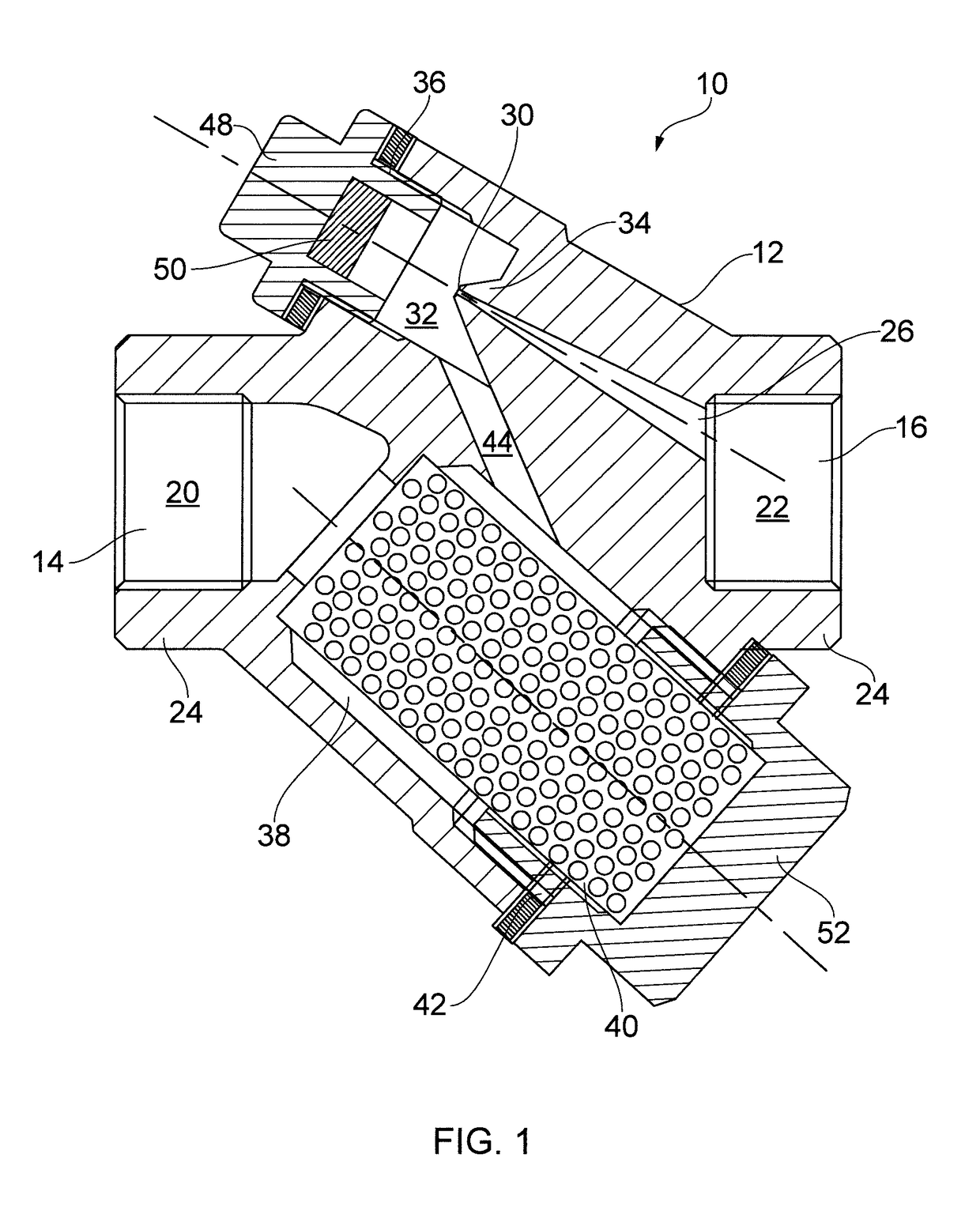Condensate removal device
a technology of condensate removal and condensate, which is applied in the direction of steam traps, solid separation, chemistry apparatus and processes, etc., to achieve the effect of increasing the time period between maintenance inspections
- Summary
- Abstract
- Description
- Claims
- Application Information
AI Technical Summary
Benefits of technology
Problems solved by technology
Method used
Image
Examples
Embodiment Construction
; FURTHER OPTIONS AND PREFERENCES
[0051]FIG. 1 shows a condensate removal device (referred to below as a steam trap) 10 according to a first embodiment of the invention.
[0052]The steam trap 10 comprises a unitary body 12 cast from stainless steel or other suitable material. The body 12 has an inlet 14 and an outlet 16 formed on opposite sides thereof. The inlet 14 and outlet 16 are apertures leading into an inlet bored region 20 and an outlet bored region 22 respectively.
[0053]The body 12 is adapted to the connected in a pipeline (not shown). The parts 24 of the body 12 surrounding the inlet 14 and outlet 16 may be arranged to connect to external piping. For example, the parts may be arranged to form any one or more of a screwed, socket weld, and flanged to an adjacent piece of piping. In one embodiment, the parts 24 may be equipped with “quick fit” connectors (also known a pipeline connectors or universal connectors), such as those used on the Emerald Steam Trap manufactured by Ther...
PUM
 Login to View More
Login to View More Abstract
Description
Claims
Application Information
 Login to View More
Login to View More - R&D
- Intellectual Property
- Life Sciences
- Materials
- Tech Scout
- Unparalleled Data Quality
- Higher Quality Content
- 60% Fewer Hallucinations
Browse by: Latest US Patents, China's latest patents, Technical Efficacy Thesaurus, Application Domain, Technology Topic, Popular Technical Reports.
© 2025 PatSnap. All rights reserved.Legal|Privacy policy|Modern Slavery Act Transparency Statement|Sitemap|About US| Contact US: help@patsnap.com



